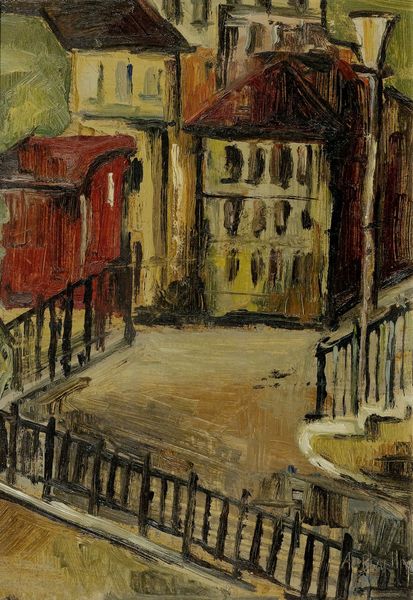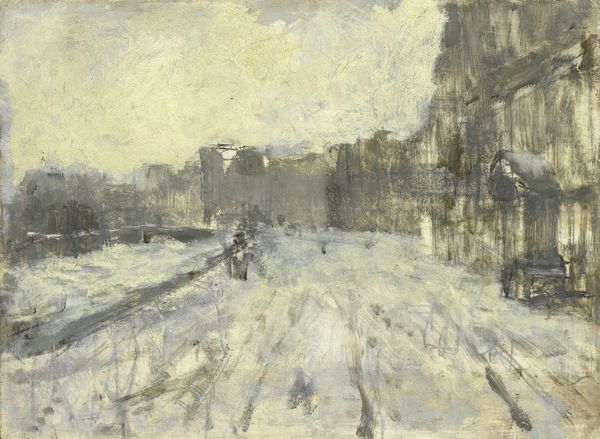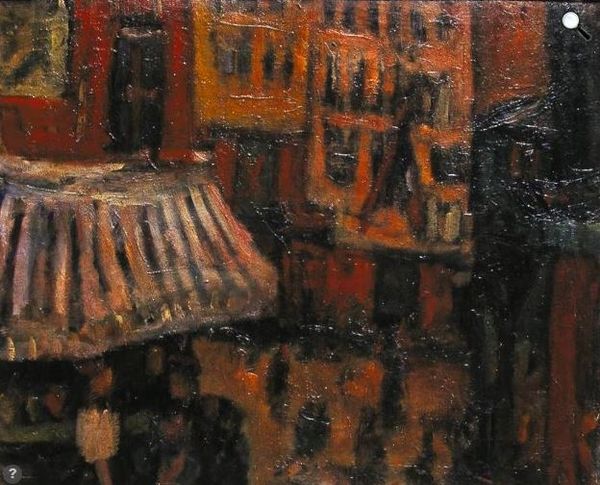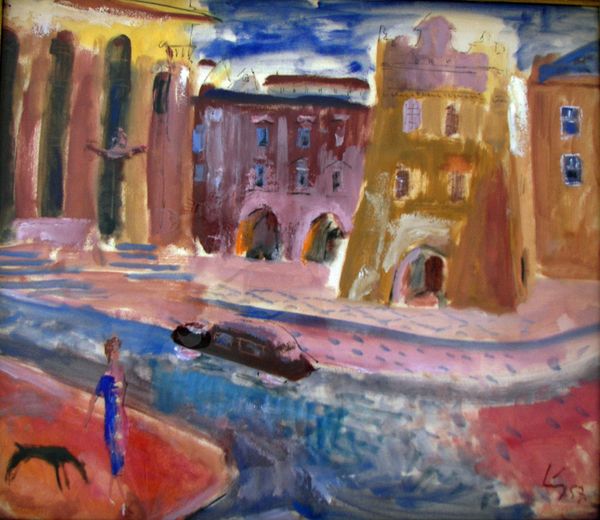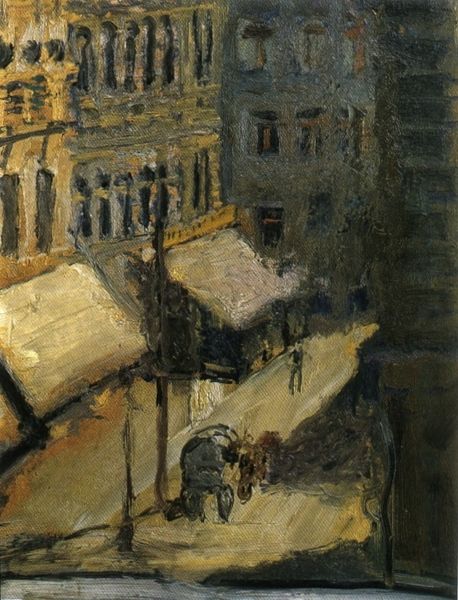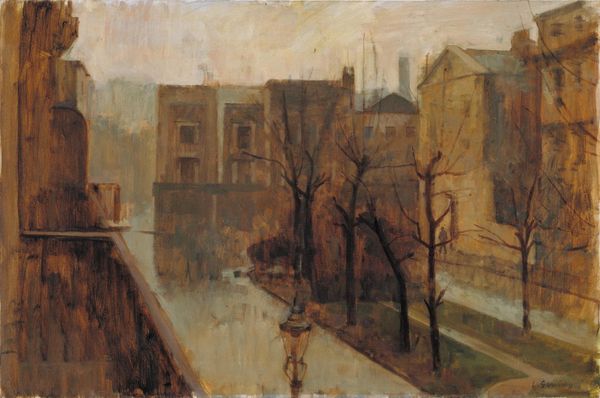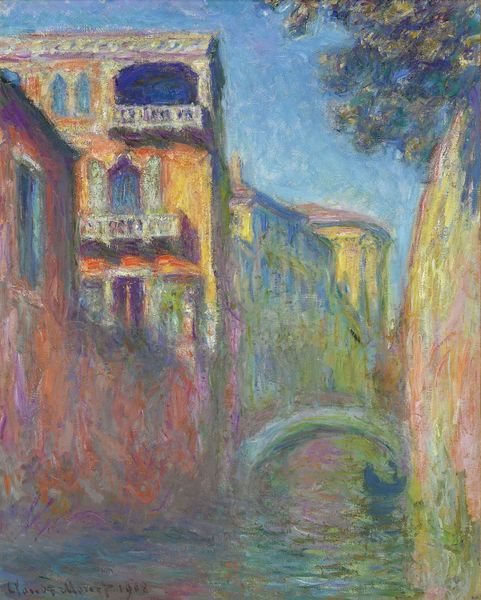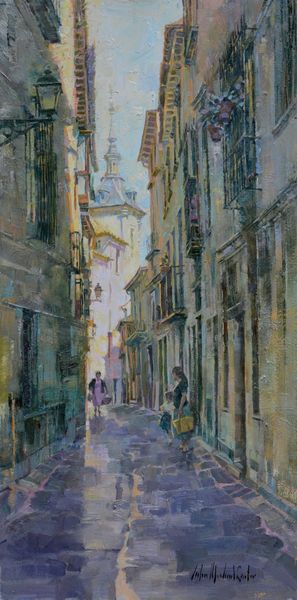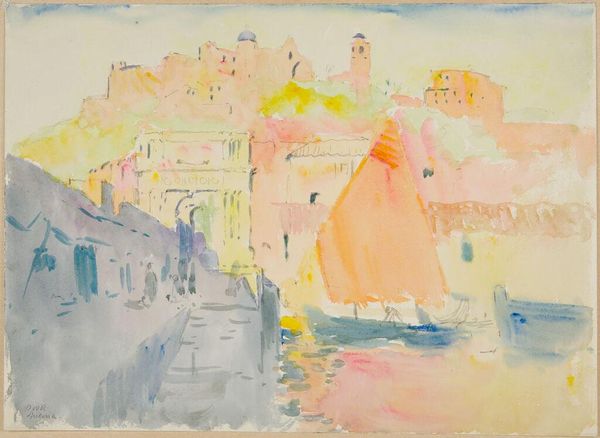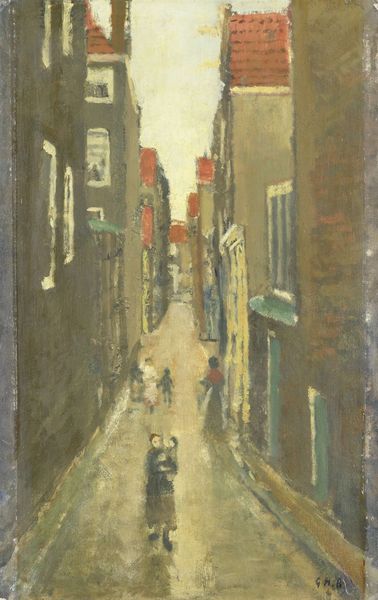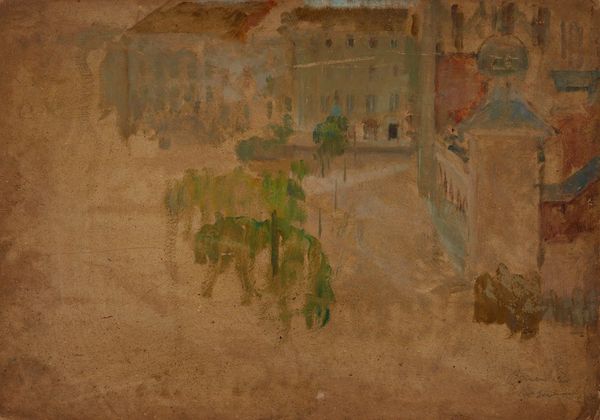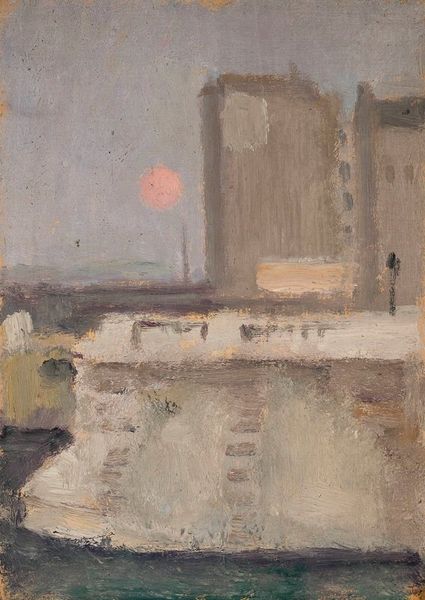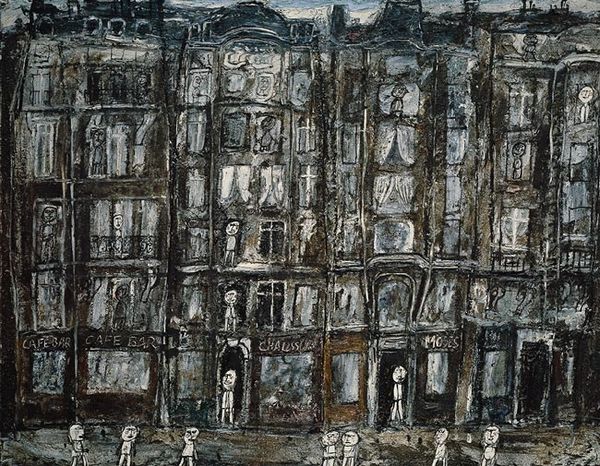
Dimensions: support: 546 x 457 mm
Copyright: © The estate of Adrian Stokes | CC-BY-NC-ND 4.0 DEED, Photo: Tate
Curator: Adrian Stokes, born in 1902, painted "Piazza Sant’Eustachio, Rome," and it now resides in the Tate Collection. The support measures 546 x 457 mm. Editor: Immediately, I think of a hazy dream. The colours are muted, almost bleached, as if the sun is bearing down. There's a certain stillness, a quiet melancholy. Curator: Stokes' work often engages with ideas of place and identity, especially in relation to the Mediterranean. He was deeply influenced by the writings of Melanie Klein and her theories of object relations. Editor: Fascinating! I can definitely feel that relational aspect. The buildings seem to lean into each other, whispering secrets. It’s almost like they're characters in a play, locked in a silent drama. Curator: I agree. This work invites us to consider how our environment shapes our understanding of ourselves and the world. Editor: It feels like a memory, fading at the edges but still potent with emotion. A beautiful, poignant piece. Curator: Indeed, a potent reminder of how place and psyche are intertwined.
Comments
tate 6 months ago
⋮
http://www.tate.org.uk/art/artworks/stokes-piazza-santeustachio-rome-t00215
Join the conversation
Join millions of artists and users on Artera today and experience the ultimate creative platform.
tate 6 months ago
⋮
This piazza lies between the Pantheon and the church of S.Ivo, with that of S.Eustachio flanking its northern side. Like the human body, architecture had a special importance for Stokes, in the interplay it presented between part and whole. He delighted, too, in its articulation of exterior and interior space and in its orderly contrasts of texture. In 1965 he stated that ever since his first visit to Italy in 1922 it had seemed to him 'that behind all the masterpieces there lay a simple progression, the progression for instance that I then observed from a cobbled street to the smooth flanks of a building.' Gallery label, September 2004
